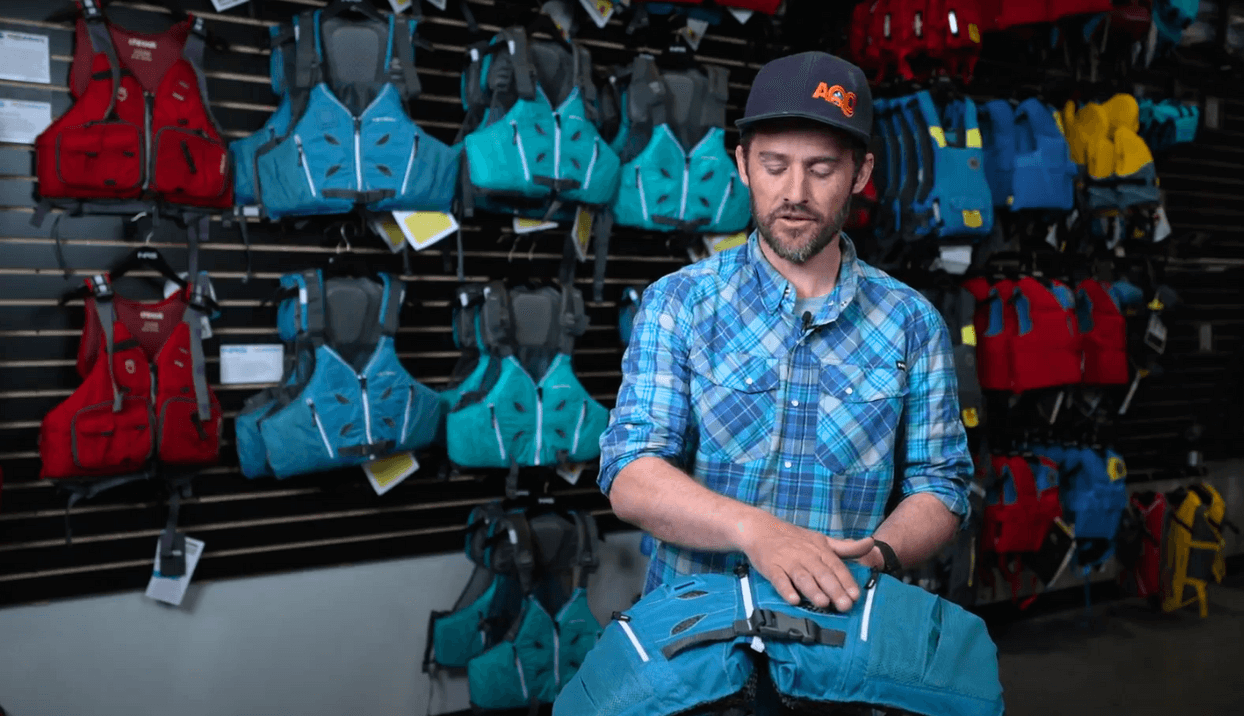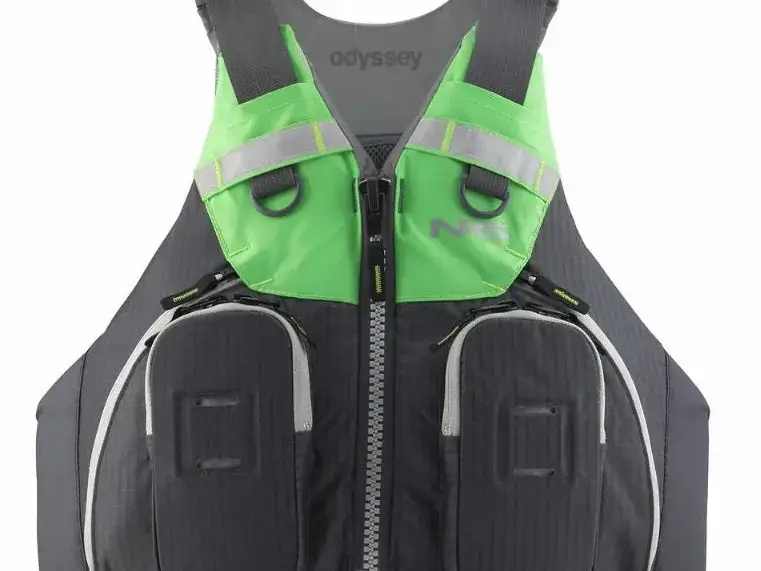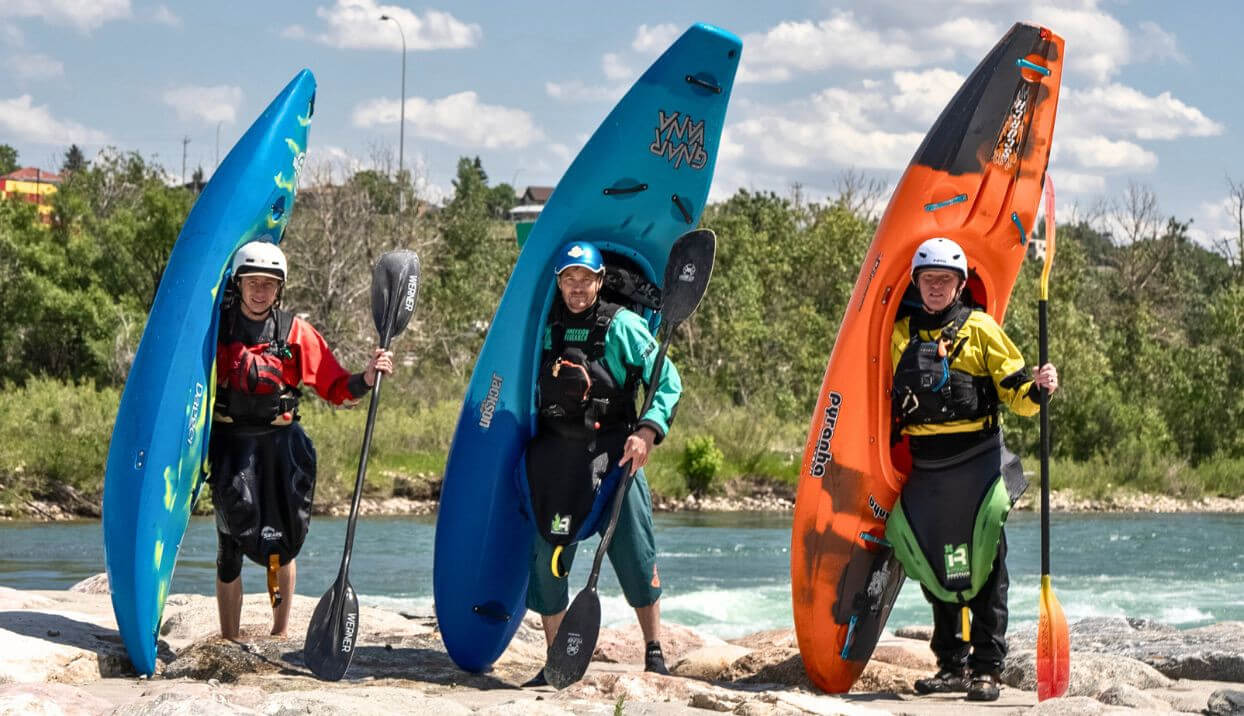Today, we're diving into a crucial topic: the proper inspection and flotation testing of your Personal Floatation Device (PFD). Whether you're a seasoned paddler or just starting out, your PFD is an essential piece of gear that should never be overlooked.
Why is a PFD so important? Well, even if you're a confident swimmer, the cold water can zap your energy in no time. If you’ve experience it yourself, you’ll know that swimming back to the shore or river bank after an unexpected dip can be dang exhausting. That's where a PFD comes to the rescue. It keeps you afloat, making swimming easier and getting back in your boat or board a breeze.
Unfortunately, your relationship with your PFD isn’t a forever kinda deal; it will lose its floatation over time. We’re here to cover best practices to maintain your PFDs performance, as well as tips to test its safety and efficiency.
How should a PFD be tested for buoyancy?
Here's the deal: PFDs, like any gear, will eventually wear down over time. Exposure to the sun, chemicals, and even cold storage during the winter months can take a toll on your trusty PFD. The foam inside may still look thick and fluffy, but its functional flotation capacity diminishes. So, how can you determine if your PFD is still up to the task?
At AQ Outdoors, we've got a tried-and-true method. Grab a 14lb weight (which simulates the weight of your head) and attach it to your PFD. Find a suitably deep body of water and let both the weight and the PFD sink. If your PFD is pulled beneath the surface, it's a clear sign that the foam has deteriorated, and it's time to invest in a new one.
Remember, taking good care of your PFD will extend its lifespan. While there's no exact expiry date, if your PFD has been repaired or altered, it's no longer usable and should be replaced and recycled.
What's the difference between a life jacket and a PFD?
Before we jump into the nitty-gritty of PFD maintenance, let's address a common question: what sets a life jacket apart from a PFD? Technically, they're the same thing, just with different names. Life jackets tend to be more bulky and provide higher flotation, often used for situations where you need maximum buoyancy. On the other hand, PFDs are lighter, more comfortable, and designed for recreational use.
[ Also read: Best Recreational PFDs For 2023 ]
Conducting a Basic Visual Inspection
Regular visual inspections are key to ensuring your PFD is in tip-top shape. Here's what you should look out for:
- Check the zipper for proper functioning, making sure it opens and closes smoothly.
- Inspect your PFD for any rips, tears, or chemical burns that may affect its performance.
- Ensure all buckles work correctly, locking properly without any broken pieces.
- Test the fit adjustment straps, ensuring they can be properly adjusted and aren't ripped or frayed.
- For rescue PFDs, check that all safety latches release as intended and that the pigtail for towing gear is intact without any damage.
- Don't forget to test the release of your safety knife, ensuring it breaks away smoothly in case of an emergency.
By incorporating these simple steps into your routine,you can rest assured that your PFD will be ready to perform when you need it most.
How Often Should a Life Jacket Be Tested?
While there's no hard and fast rule for how often you should test your life jacket, a general guideline is to inspect it at least once a year. However, it's always a good idea to give it a thorough check before each outing on the water. Remember, safety should never be compromised!
[ Also read: Mustang Survival PFD Buying Guide ]
What are the Requirements for Transport Canada PFDs?
When it comes to PFDs, it's essential to ensure that they meet the requirements set by Transport Canada. These requirements ensure that the PFDs are designed and tested to meet the necessary safety standards. To learn more about the specific requirements for Transport Canada approved PFDs, you can visit their official website here. It's always important to choose a PFD that meets these standards to ensure your safety on the water.
What are the Requirements for US Coast Guard Approved PFDs?
If you're paddling in the United States, it's crucial to understand the requirements for US Coast Guard (USCG) approved PFDs. The USCG sets specific standards to ensure the effectiveness and reliability of PFDs. These requirements cover various types of PFDs based on the intended use, such as Type I, II, III, IV, and V. To learn more about the specific requirements for USCG approved PFDs, you can visit the USCG website here. Adhering to these requirements will help you choose the right PFD that meets the necessary safety standards in the United States.
By understanding the requirements for both Transport Canada and US Coast Guard approved PFDs, you can make informed decisions when selecting your PFD, ensuring that it meets the necessary safety standards for your specific region.
PFD Inspection and Flotation Testing Summary
To sum it all up, maintaining your PFD is crucial for your safety and the safety of others on the water. Remember these key points:
- Regularly inspect your PFD, checking for proper functioning of zippers, buckles, and fit adjustment straps.
- Conduct visual checks for any signs of damage, such as rips, tears, or chemical burns.
- Perform a float test using a 14lb weight to ensure the foam inside your PFD is still providing adequate buoyancy.
- If your PFD is over 5 years old, shows signs of wear and tear, or fails the flotation test, it's time to replace it.
If you have any further questions about PFD inspection and flotation testing, feel free to contact us below or visit us in store.
Related PFD Articles
NRS Recreational PFD Buying Guide
Best Whitewater PFDs Complete Guide
Best Recreational PFDs for Paddling
Best Kids PFDs and Life Jackets
Mustang Survival PFD Buying Guide
AQ Outdoors Contact
Edmonton: (p) 780 463-4892 (e) info@aquabaticsedmonton.com
Calgary: (p) 403 288-9283 (e) info@aqoutdoors.com





